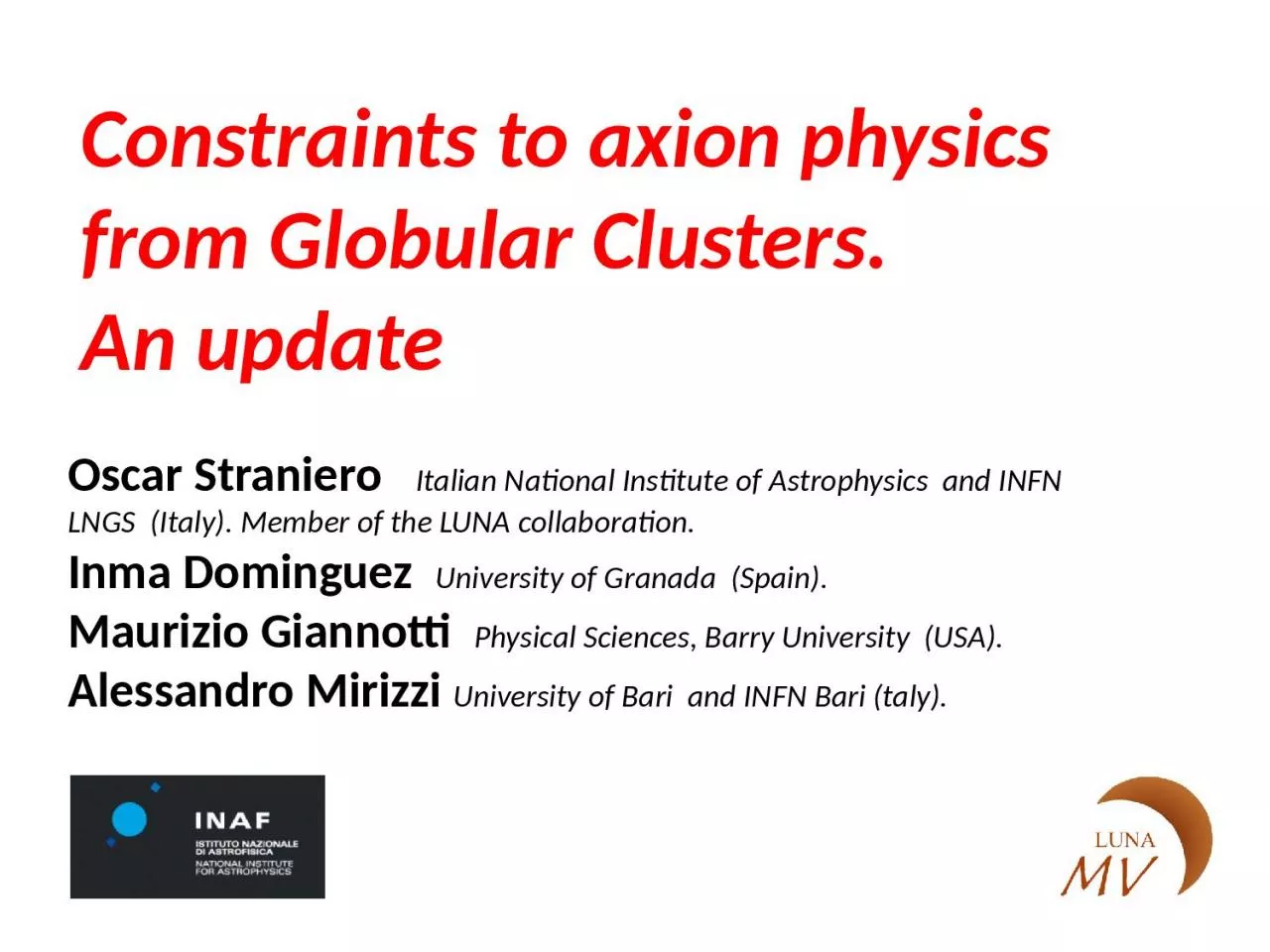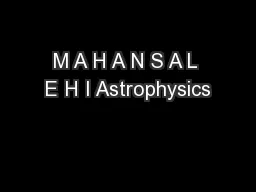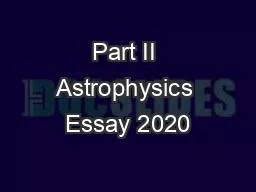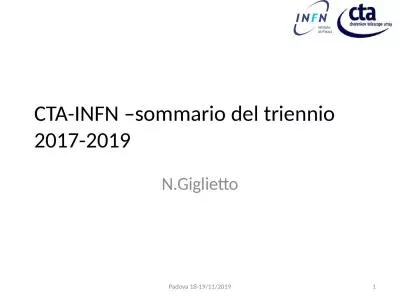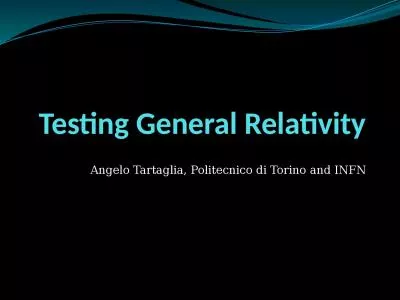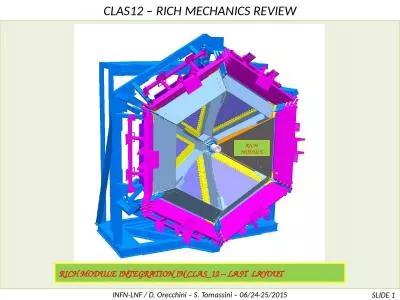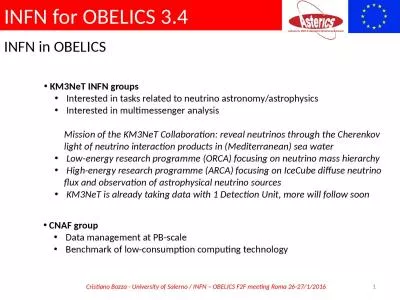PPT-Oscar Straniero Italian National Institute of Astrophysics and INFN LNGS (Italy
Author : SunshineFlower | Published Date : 2022-07-28
Member of the LUNA collaboration Inma Dominguez University of Granada Spain Maurizio Giannotti Physical Sciences Barry University USA Alessandro Mirizzi University
Presentation Embed Code
Download Presentation
Download Presentation The PPT/PDF document "Oscar Straniero Italian National In..." is the property of its rightful owner. Permission is granted to download and print the materials on this website for personal, non-commercial use only, and to display it on your personal computer provided you do not modify the materials and that you retain all copyright notices contained in the materials. By downloading content from our website, you accept the terms of this agreement.
Oscar Straniero Italian National Institute of Astrophysics and INFN LNGS (Italy: Transcript
Download Rules Of Document
"Oscar Straniero Italian National Institute of Astrophysics and INFN LNGS (Italy"The content belongs to its owner. You may download and print it for personal use, without modification, and keep all copyright notices. By downloading, you agree to these terms.
Related Documents

